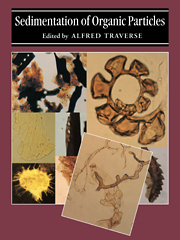Book contents
- Frontmatter
- Contents
- Editor's preface
- List of contributors
- I Introduction
- 1 Sedimentation of palynomorphs and palynodebris: an introduction
- II Studies of palynosedimentation in modern environments
- III Reconstruction of late Cenozoic vegetation and sedimentary environments from palynological data
- IV Application of data on palynosedimentation to solution of geological problems
- V Appendix
- Index
1 - Sedimentation of palynomorphs and palynodebris: an introduction
Published online by Cambridge University Press: 06 January 2010
- Frontmatter
- Contents
- Editor's preface
- List of contributors
- I Introduction
- 1 Sedimentation of palynomorphs and palynodebris: an introduction
- II Studies of palynosedimentation in modern environments
- III Reconstruction of late Cenozoic vegetation and sedimentary environments from palynological data
- IV Application of data on palynosedimentation to solution of geological problems
- V Appendix
- Index
Summary
Introduction
The title above is really the subject of this whole book. Some time ago, Egon Degens (1965) estimated that about 2% of the total volume of sedimentary rocks on Earth is organic matter, that is, 20 m of a total of 1000 m of sediment in the whole of Earth history. All but 5 cm (= coal and oil) of the 20 m (=19.95 m) is finely disseminated organic matter in shales, limestones and sandstones. Much of it is amorphous, much is from marine animals, algae and protists, either degraded or in recognizable particles. Since at least the Late Devonian, however, terrestrial plant biomass has been a (perhaps the) major source of the organic matter in sedimentary rocks (see discussion in Traverse, 1992). At present, approximately 150 × 106 metric tons of chemically resistant, particulate organic matter (POC) reaches the continental shelves from the major rivers of the world (Deuser, 1988; Ittekot, 1988). That can be compared with estimates of total sedimentation of 70 × 108 metric tons annually (Holland, 1978).
As a rather rash guess, I would say that modern sedimentary rocks probably contain something like 10 times as much resistant-walled pollen-and-spore-like material as do 375 × 106-year-old Devonian shales and sandstones (Schuyler & Traverse, 1990). Nevertheless, land-derived plant debris in microscopic particles has been a very significant factor in building the organic bankroll of the Earth for some hundreds of millions of years, and much of it is recognizable as to source. In addition, marine-derived organic matter has been and is making a sizable contribution.
- Type
- Chapter
- Information
- Sedimentation of Organic Particles , pp. 1 - 8Publisher: Cambridge University PressPrint publication year: 1994
- 4
- Cited by

